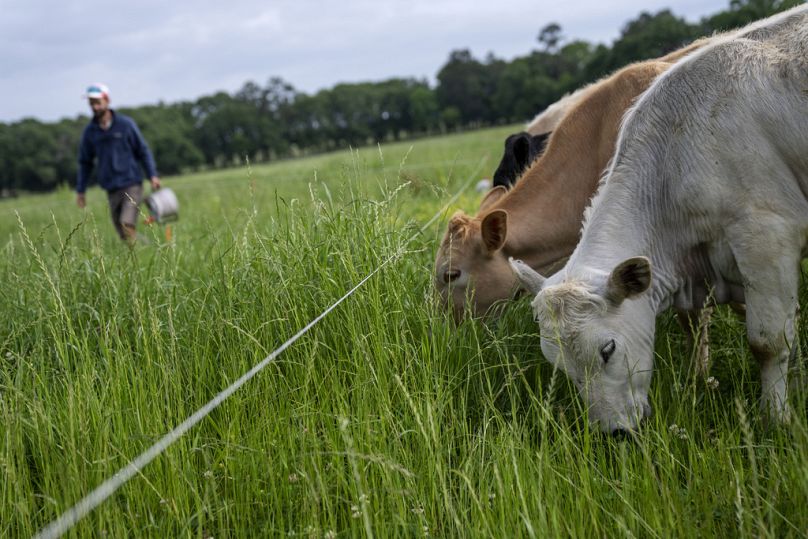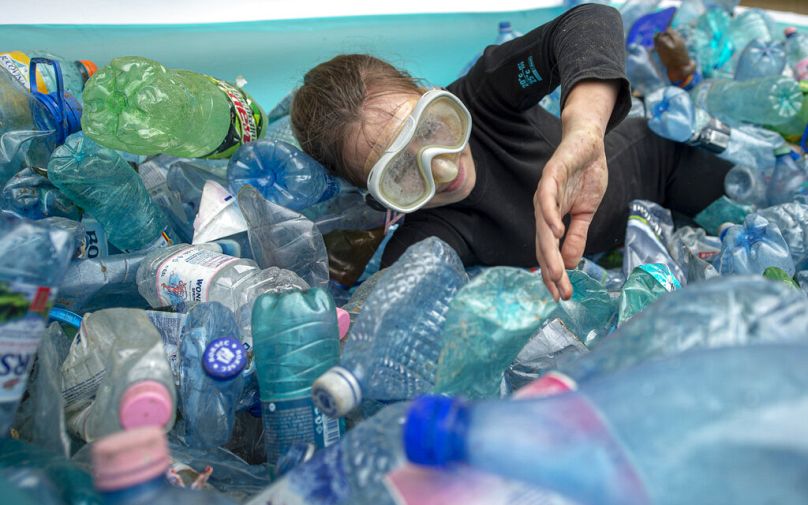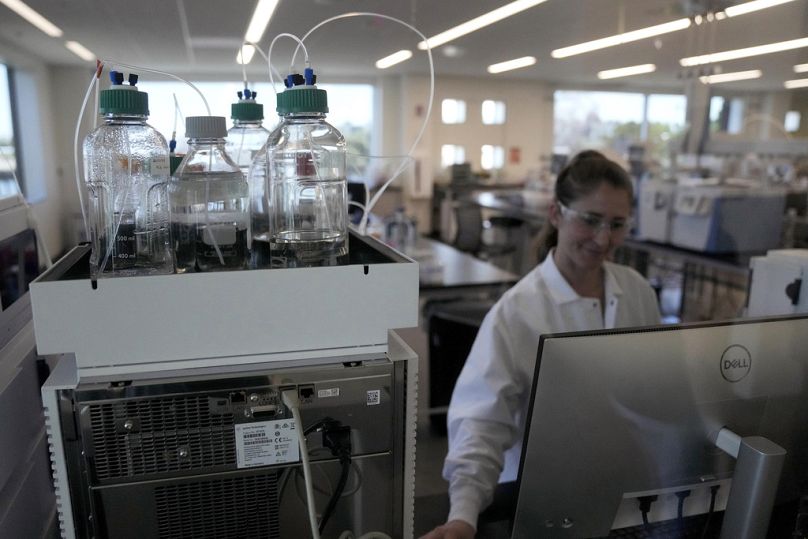We need to bridge the divide between AI engineers and biologists with the same goal of having a positive impact on society, Stef van Grieken writes.
Generative AI is being used to improve processes across many industries — from automating office work to creating better marketing materials — but it's science and engineering where it could have even more impact.
When used in combination with biology, generative AI can also be applied to reduce, even cut out, the industrial processes of material production, and dramatically reduce the environmental cost of human consumption.
Synthetic biology, a market valued at €10.4 billion in 2022, has the potential to create products beyond our imaginations – in fact, McKinsey Global Institute has predicted that 60% of everything humans consume could be produced using biology.
Already, we’re seeing a number of companies producing a range of products in critical industries — materials, chemicals, food, agriculture and pharmaceuticals — using synthetic biology.
Solving food and chemicals
For those not quite sold on plant-based food alternatives, lab-grown food products may look like the future.
Take a company like Perfect Day, who produce bio-based milk using precision fermentation — which involves producing molecular identical dairy proteins like casein or whey by encoding milk protein DNA sequences into microorganisms like yeast or fungi, which are then fermented with nutrients and sugar in tanks (similar to how beer is produced), producing proteins that are identical to traditional ones coming from dairy.
Perfect Days’ milk protein produces up to 97% less carbon emissions and 99% less blue water than traditional milk production.
According to the company, if only 5% of milk consumed in Europe was animal-free, it would save the equivalent of 660,000 tours of the world in petrol — governments should be taking more significant strides to both invest in the production of bio-based milk, and encourage consumers to make the switch.
Bio-based chemicals are one example that has hit the headlines recently, with the US government setting a goal to produce at least 30% of its chemicals via biomanufacturing processes over the next 20 years.
With the chemical industry’s global emissions accounting for around 2% of total CO2 emissions in 2021, bio-based chemicals have the potential to dramatically reduce our reliance on fossil fuels.
One company that has had significant traction in the space is Solugen, which mixes corn syrup with genetically engineered enzymes, to create substitutes for common chemicals normally made using phosphates and oil.
However, many companies in the field have struggled to find commercial traction.
We will need to see significant investment, both in the public and private space, to accelerate the production of bio-based chemicals.
Solving materials
There is also the use of synthetic biology for the production and recycling of materials. Take concrete — it’s essential to build our homes and offices, but has a colossal carbon footprint, with cement manufacturing accounting for 8% of the world’s total CO2 emissions.
Biologists have now developed new forms of low-carbon concrete, including one that absorbs CO2 using an enzyme found in blood – when small cracks form in the concrete, the enzyme interacts with CO2, mimicking the characteristics of concrete and filling the crack.
Similarly, synthetic biology has the potential to transform the life cycle of materials such as plastics and polymers commonly used in water bottles and clothing.
Firstly, scientists have developed enzymes that can break down PET plastics commonly found in drinks bottles, helping lessen the environmental impact of our waste.
Similarly, we can produce new forms of plastic using enzymes meaning we can be less reliant on petrochemicals.
However, many of the existing low-carbon concrete solutions are expensive technologies which are far from commercialisation, or lower-cost alternatives that deliver limited emissions reductions.
Much of the innovative technology that currently exists in the space is only slightly beyond proof of concept. It will require significant investment to develop and scale the technology for widespread application.
Accelerating R&D
At its heart, synthetic biology attempts to change the sequence encoded in the DNA of a protein to make it do something else.
The traditional nature of research is based on trial and error which means that creating effective products has historically been extremely costly and time-consuming. It is not uncommon that 95% of designed proteins tested in the laboratory fail to hit their design specifications.
This is where generative AI comes in: large language models can be trained on DNA sequences and experimental results on known proteins, which means we can predict the most appropriate DNA sequences for a protein that exhibits desired characteristics.
This allows scientists to significantly increase the probability of reaching design objectives when engineering a protein.
By utilising the latest biological research and analysis of protein sequences, generative AI can give scientists the ability to "reverse engineer" a protein to achieve the desired output with fewer, more successful experiments than is possible with previous methods.
Synthetic biology companies working in the space are already experimenting with generative AI models to improve their platforms. For example, LanzaTech is experimenting with generative AI to design DNA sequences for enzymes producing microbes for clothing, plastics, jet fuel and even perfume; and, Zero Coffee is using an AI-powered taste-optimisation platform for developing “beanless coffee”.
There’s also the potential for software to provide generative AI models for synthetic biology companies to implement into their own processes.
Cradle’s platform, which is trained on data generated in a wet lab, as well as publicly available and customer data, enables users to engineer the desired protein function and properties, making it possible to create and scale protein-based products much faster and more cost-effectively.
The future is biology
So, while the use of generative AI in biotech is already a huge market — valued at almost €50 million in 2022 — it is still nothing compared to the synthetic biology market as a whole. We need to bridge the divide between AI engineers and biologists with the same goal of having a positive impact on society.
While generative AI in biology holds great promise to produce sustainable solutions, addressing the climate crisis requires a multi-faceted approach that includes policy changes, technological innovations, and investment.
There must be cross-collaboration between different governments, investors, Big Tech, and emerging startups, for generative AI to have a meaningful impact on the climate crisis.
Stef van Grieken is the co-founder and CEO of Cradle.
At Euronews, we believe all views matter. Contact us at view@euronews.com to send pitches or submissions and be part of the conversation.














